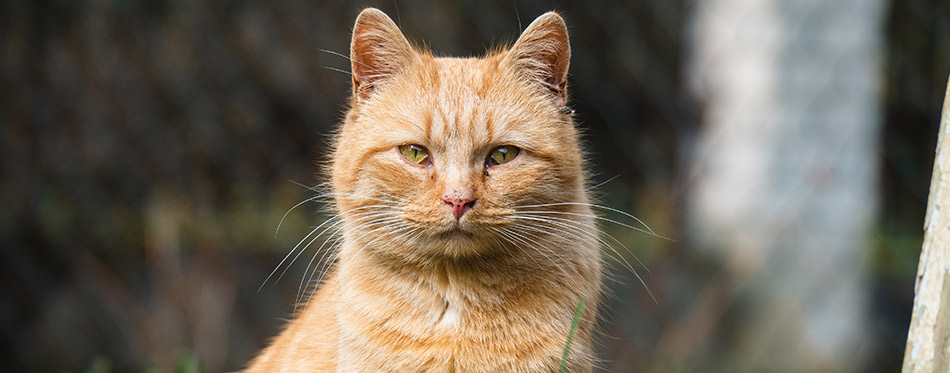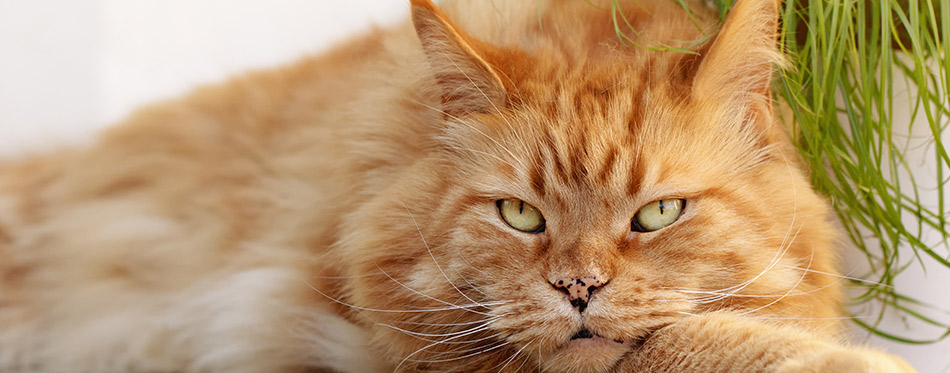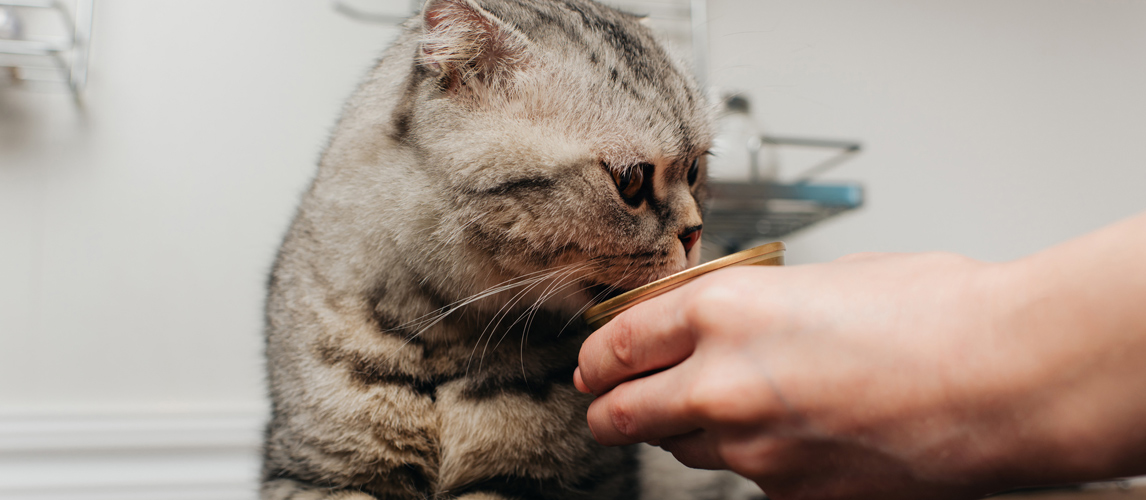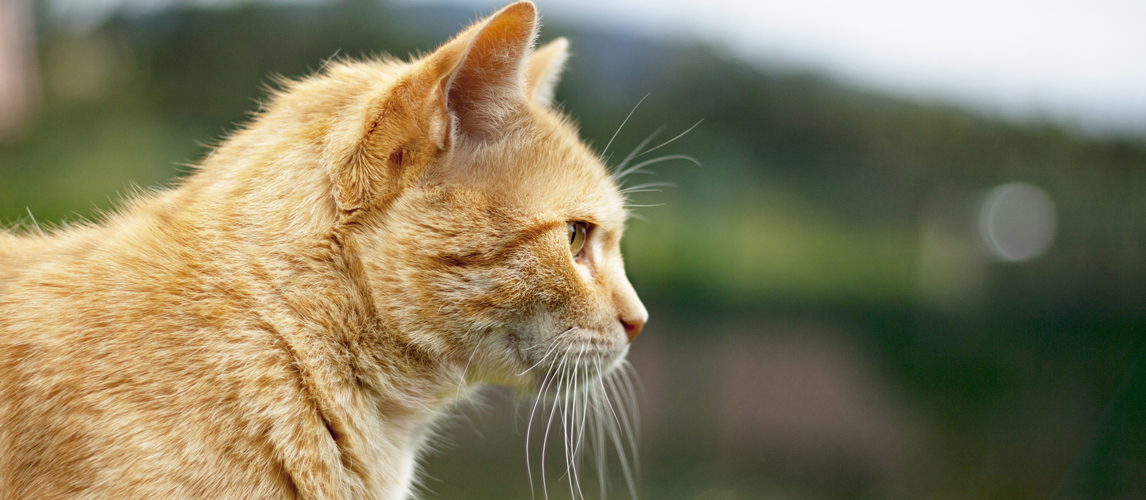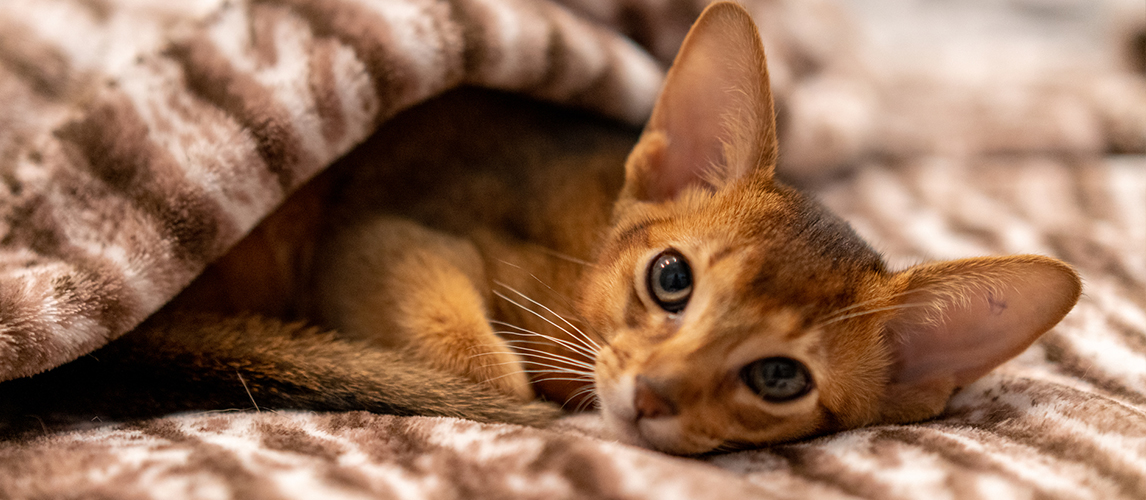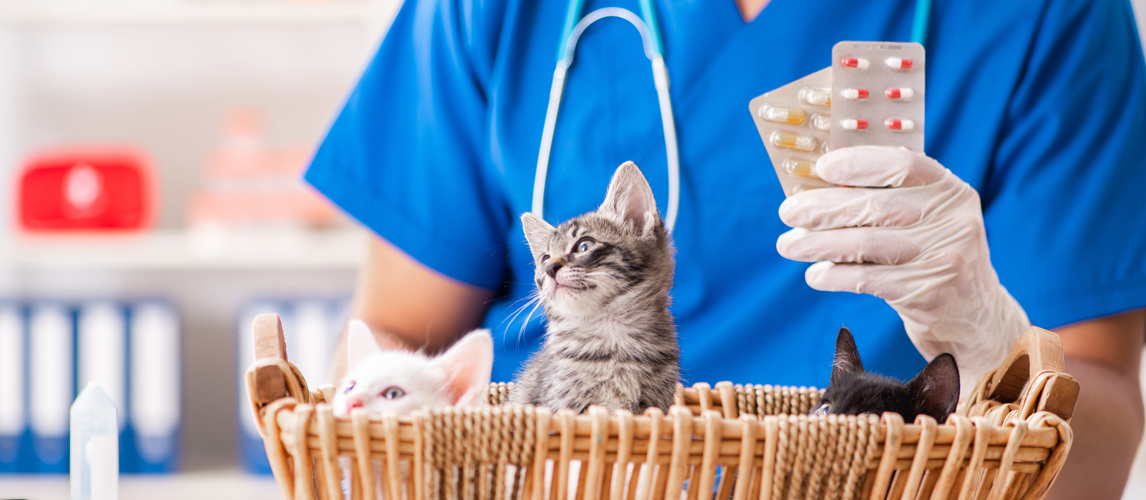
Hairballs are distressing for both cats and their owners. For cats, it is very unpleasant for them to gag and retch as they are bringing up a hairball. For owners, it is extremely unpleasant to have to clear them up! Now, thanks to the wonders of modern veterinary medicine, you can easily get hold of the best hairball remedy for cats to cure this unpleasant problem.
Hairball remedies for cats will often both prevent and cure the issue of hairballs. They prevent hairball formation by stopping hair from clumping together. They ease the hair through the intestines by promoting digestive health in a gentle way. Hairball remedies may also have ingredients that promote a healthy feline coat and this prevents excessive molting which also helps with hairball control. To help you choose the best hairball remedy for your kitty, check out our useful guide.
The Best Hairball Remedy for Cats
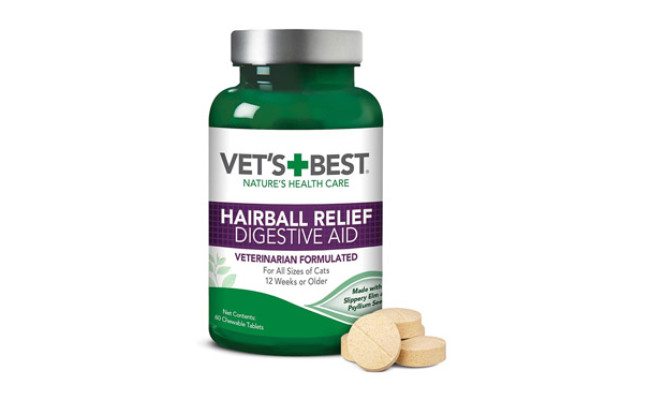
The Vet’s Best Cat Hairball Relief Digestive Aid comes in a chewable tablet form that is easy to break apart, giving you plenty of options for how you administer them to your cat. You can feed them as a treat or hide them in food – cats love the natural chicken liver flavor.
The formulation has been designed by vets with plant-based ingredients to support your cat’s natural digestive health. It includes slippery elm bark which forms a slippery gel within the gut and helps to prevent hairball formation. There’s also Psyllium Seed from the Plantago ovata plant that forms a soluble fiber and helps to keep the food (and hair) moving through the colon in a natural way – this helps with hairball control in cats. The Marshmallow Root is high in mucilage, making it a slimy and thick consistency that helps with cat hairball control as well as supporting urinary tract health.
Finally, it’s rich in papaya fruit – a natural source of proteolytic enzyme which helps to break down proteins in the intestines and support digestive health.
Psyllium Seed 50 mg
Marshmallow Root 25 mg
Slippery elm bark 25 mg
First three ingredients (inactive): Apple Fiber Powder, Calcium Carbonate, Celulose
- Brand: Vet’s Best
- Model: 3165810113
- Weight: 0.16 Ounces (60 tablets)
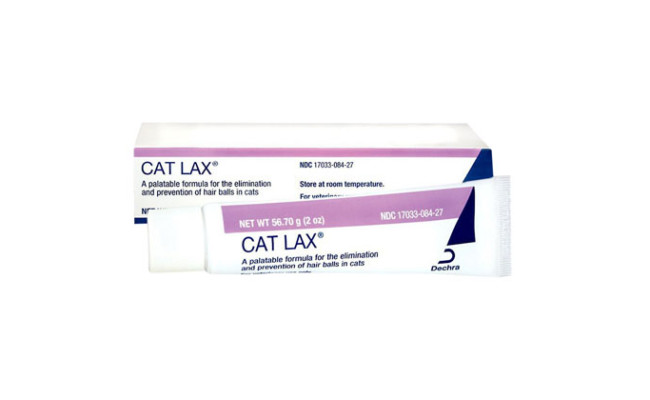
Our best value product is a cat hairball gel that is palatable enough for even fussy eaters to tolerate. It is administered by placing a small amount on a cat’s paw and allowing them to lick it clean – causing no stress to the kitty or their owner!
The Cat Lax Cat Supplement contains cod liver oil and Vitamin E that keeps a cat’s coat healthy. This reduces shedding and therefore helps to prevent hairballs. Because it also contains petroleum jelly laxatives, any hair that is swallowed will pass quickly through the digestive system and hairballs are less likely to form. For cats that have a problem with hairballs, it should be given once a day. To prevent hairballs in cats, it should be administered two or three times a week.
Cod Liver Oil
Caramel
Lecithin
Malt Syrup
White Petrolatum and Vitamin E
- Brand: Dechra
- Model: Cat Lax
- Weight: 2 ounces
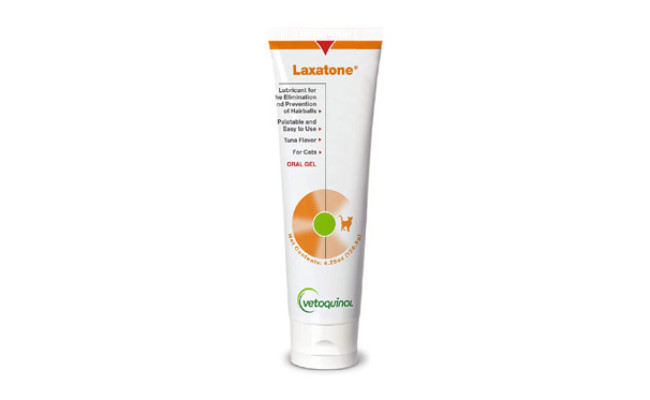
A palatable oral gel that both prevents hairball formation and helps your cat’s digestive system to remove them in a gentle way once they have already formed. It has a delicious tuna flavor and once you have placed a little on your cat’s paws, they will be keen to lick the rest of the dose from a spoon. A higher dose of Vetoquinol Laxatone is needed for treatment and a lower dose for hairball prevention.
The active ingredients are white petroleum jelly (petrolatum), soybean oil and light mineral oil which are all foodgrade and approved by vets as safe for use. The oral gel coats the hair so that it passes comfortably through the digestive system without forming into balls. It is also an effective and gentle treatment for feline constipation.
Useful for hairball treatment and hairball prevention
Very palatable to cats – tuna flavor
First three ingredients are white pertolatum, soybean oil, light mineral oil
- Brand: Vetoquinol
- Model: 410620
- Weight: 4.25 ounces
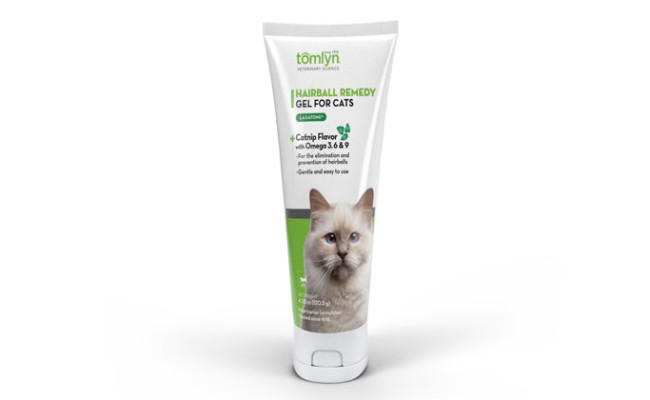
Available in a catnip, maple or tuna flavor that cats find irresistible, the TOMLYN Laxatone Hairball Remedy Gel for Cats is easy to administer and highly effective as a cat furball medicine. All you have to do is place some of the delicious cat hairball paste on your cat’s paws and they will be happy to lick the rest of the dose. It can be used for both treatment and prevention – at different doses and over different periods of time.
The oil-based ingredients coat the hairs in the digestive tract and ensure that they pass easily through the digestive system without forming into hairballs and potentially causing blockages. The oils include petroleum jelly (white pertolatum), soybean oil and light mineral oil. The soybean oil is rich in Omega 3, 6, and 9 fatty acids which are also essential for maintaining a healthy coat and reducing shedding.
Irresistible flavor and easy to administer
Oil-based ingredients to coat hair and prevent hairballs
First three ingredients are white pertolatum, soybean oil, light mineral oil
- Brand: Tomlyn
- Model: 305011
- Weight: 0.32 ounces
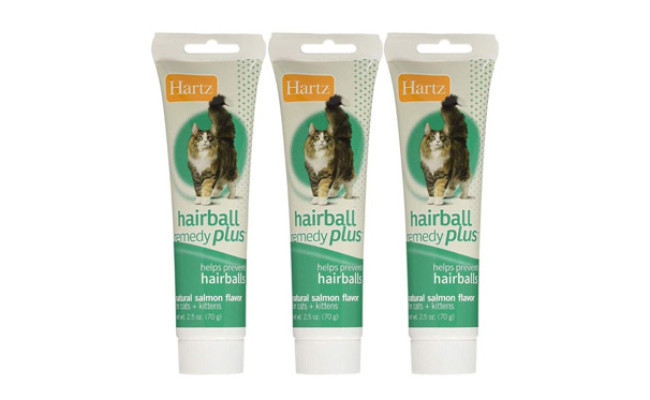
Our premium pick of the cat hairball treatments is the Hartz Hairball Remedy Plus Paste for Cats which contains three tubes of hairball remedy. Each tube contains 2.5 ounces. It contains oil-based ingredients that help hair to pass harmlessly through a cat’s intestines. With regular use it can also help to prevent hairballs.
It contains liquid pertolatum that coats hairs so that they are less likely to clump together. It also contains vitamins and sunflower oil to promote coat health and salmon oil to give it a delicious taste.
Liquid pertolatum
Malt extract
Glycerin
First three ingredients (inactive) – malt extract, glycerin, salmon oil
- Brand: Hatrz
- Model: 305011
- Weight: 0.32 ounces
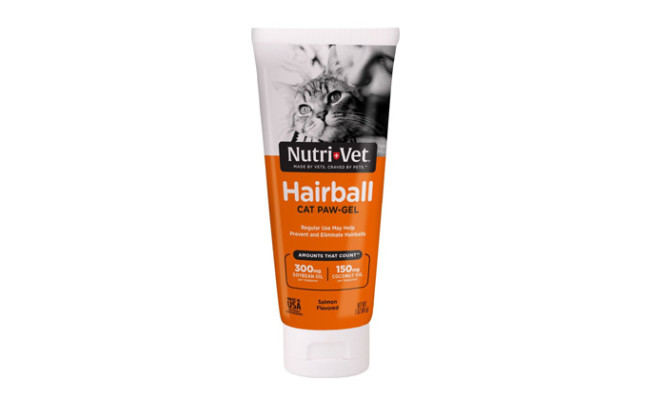
The powerful micro-nutrients in this hairball remedy will help to prevent excessive shedding and therefore assists with hairball control. The Nutri-Vet Cat Hairball Support Paw Gel is an effective hairball prevention gel in a delicious salmon flavor that cats cannot resist.
It contains natural oils that promote coat and skin health in cats including soybean oil, coconut oil, wild alaskan salmon oil and vitamin C.
0.5 % crude protein
22% fat
1 % crude fiber
First three ingredients are water, stearic acid, hydrogenated vegetable oil
- Brand: Nutri Vet
- Model: 50403-1
- Weight: 3 ounces
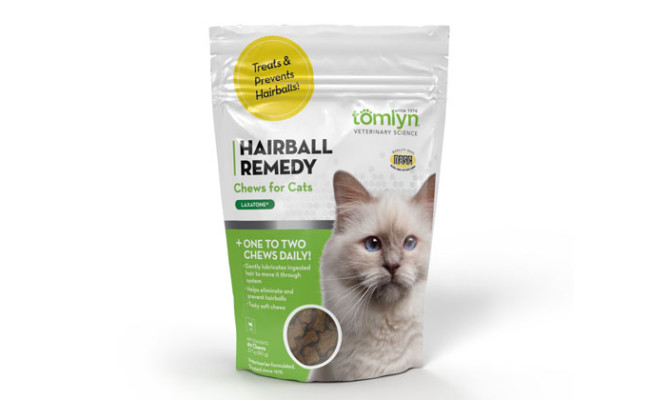
These chicken flavor anti hairball cat treats make it so easy to treat and prevent cat hairballs and keep your kitty healthy. The TOMLYN Laxatone Chicken-Flavor Hairball Remedy Chews are gentle on your cat’s intestine. They work by coating the hairs that your cat swallows and helping them move efficiently through the gut without clumping together.
These cat hairball treats contain mineral oil, canola oil, soy lecithin and aloe vera gel which are highly effective lubricants and also help to keep the coat healthy.
Mineral oil
Canola Oil
Soy Lecithin
Aloe vera gel
First three ingredients are Brewer’s dried yeast, calcium sulfate, chicken liver flavor
- Brand: Tomlyn
- Model: B0813QT5BP
- Weight: 3.17 ounces
Best Hairball Remedy for Cats Buying Guide & FAQ
Why Your Cat Needs Hairball Remedies
When cats groom themselves they inevitably remove some hair using the hook-like pimples on their tongue. A lot of this hair is swallowed and can either pass through the intestines or stay in the stomach where it forms hairballs and is vomited out in a rather alarming way with a lot of retching and gagging. However, it is not always this simple and hairballs can cause blockages and symptoms such as diarrhea and constipation. Intestinal blockages can be fatal – if your kitty has lethargy, a lack of appetite, and vomiting, you should take them to the vet straight away.
Hairball remedies are often needed by long-haired cats or other breeds that have a tendency to molt a lot. These remedies work in a gentle way by easing the hair through the digestive tract in a way that stops hairballs from forming. They are essentially gentle laxatives – helping cats to remove the hair from the gut naturally.
Your cat needs hairball remedies because:
- They coat hair and stop it from clumping together
- They act as a mild laxative and move hair through the intestines
- They prevent intestinal blockages and unpleasant retching in cats
- They cut down on mess in the home caused by regurgitated hairballs
- They promote a shiny and healthy coat to minimize shedding
- They promote skin health to prevent irritation and excessive grooming
There are some other steps that you can also take to reduce the risk of hairballs in cats. Regular grooming will help to remove hair that would have ended up in their mouths. Getting cats used to grooming at a young age is always a good idea but even older adults can be persuaded with patience and some tasty treats! There is also specialized food for hairballs that contains a lot of fiber and helps cats to move the hair through their intestines without forming hairballs. Any health supplements or food that keeps their coat in a good condition will cut down on shedding. Also, anything that discourages cats from grooming excessively will help. Often, you simply need to provide some alternative entertainment that cats will enjoy such as a new game or toy. Nervous cats can excessively groom so it may be worth making some changes to make your kitty more relaxed.
Things to Consider When Choosing Hairball Medicine for Cats
There are several types of hairball medicine to choose from so it is useful if you are familiar with some of the different features that they offer. Here are the main things to consider.
Texture
Hairball remedies are available as gels, pastes, tablets and treats so you can choose the way that you would like to give them to your cat. Each texture has advantages and disadvantages. It’s easy to control the dose with tablets and treats but not all cats will take them. You can hide tablets in food. Gels and pastes are easy to give a cat but they can be messy. To learn how to give a cat a pill, click here.
Ease of administration
There is no point in making the treatment of hairballs stressful for a cat or their owner. Therefore, it is important that they are easy to administer. Treats rely on your cat liking the flavor and being willing to chew and swallow it. Gels and pastes also rely on your cat loving the flavor and this is why they are often available in a few different recipes such as catnip, maple or chicken flavor. The theory is that you place a small amount on your cat’s nose or paws and they will love it so much that they will lick it off the spoon. With other cats, you can hide tablets in their food or place it in their mouth and encourage them to swallow.
Prevention, cure or both?
Some hairball remedies prevent hairballs whereas others act as a cure. Hairball cures will help the hair move rapidly through the intestines and out in the poop. You should find the hairballs in the litter tray. Others, prevent hairballs by coating the hairs. This stops them from clumping together and prevents hairball formation. Some remedies will do both. You may have to give higher doses every day for around a week to remove the existing hairballs. Then, you will be directed to give your cat a lower dose and perhaps just a few times a week to prevent further hairballs from forming.
Ingredients to Aid Digestion
Hairball remedies often contain ingredients (such as petroleum jelly) that helps the hair to move rapidly through the intestines. Mineral oil and soybean oil does the same. These ingredients act as a mild laxative.
Ingredients to Promote a Healthy Coat
There may be ingredients to promote a healthy coat. These include vitamins and omega oils that nourish the skin and prevent excessive shedding. They also help to smooth any skin irritation. Cats with irritated skin tend to over-groom and this can cause them to swallow a lot of hair leading to the formation of hairballs.
Hairball Remedy for Cats FAQ:
Q: How often should I give my cat hairball remedy?
A: Remedies for hairball control will come with clear instructions indicating how much of the remedy should be given and how often. It is important that you follow these instructions very carefully.
For those remedies that are designed to both treat and prevent hairballs, you would give a higher dose for a short period of time to treat the hairballs. Then, you continue with a lower dose to prevent the problem from coming back. If you are unsure about dosage, you should always consult your vet.
Q: How long does it take for a cat to pass a hairball?
A: You should expect hairball remedies to work in a couple of days and for your cat to pass the hairballs in their poop. They are designed to work in a gentle and gradual way and many are given to a cat every day for seven days initially.
If you have been administering the hairball remedy as recommended for over a week and you have seen no improvement, it is time to contact your vet.
Q: Does coconut oil help cats with hairballs?
A: Coconut oil is a safe dietary supplement that can be enjoyed by cats. It is useful in two ways. Firstly, it adds moisture and bulk to the food as it passes through the intestine. This is excellent for a cat’s digestive health and helps to prevent the formation of hairballs. Secondly, coconut oil is an anti-inflammatory. If your cat has suffered any inflammation of their respiratory tract when they were regurgitating hairballs, it will help to calm it down. It can also soothe skin irritation and therefore discourage excessive grooming that can lead to hairballs. Many cats also love the taste!
Q: Does wet cat food help with hairballs?
A: Anything that makes food pass through the intestines quickly will help with hairballs. The hair has less time to clump together and cause a problem. It is certainly true that feeding a diet of exclusively wet cat food to your cat will help with hairball control. However, not all cats like wet cat food and not all owners find it convenient. You may prefer to carry on feeding your cat dry food and use a hairball remedy instead. For long-haired cats and those particularly prone to hairballs, a wet food diet alone may not be enough to solve the problem. You may also have to use a hairball remedy.
Sources:
- Cat Vomiting: Types, Causes and Treatments, Best Friends Animal Society
- General Cat Care, The ASPCA
Sharon is a Ph.D. scientist and experienced pet content writer. As a life-long animal lover, she now shares her family home with three rabbits, a Syrian hamster, and a Cockapoo puppy. She has a passion for researching accurate and credible information about pets and turning it into easy-to-understand articles that offer practical tips. When it comes to our furry friends, she knows that there is always something new to learn!
